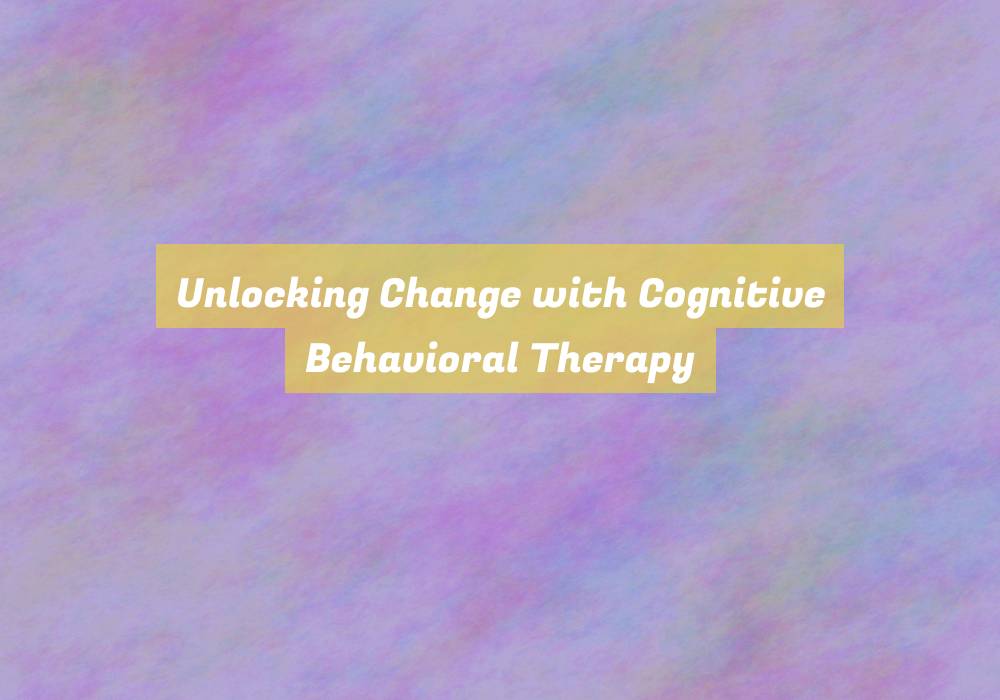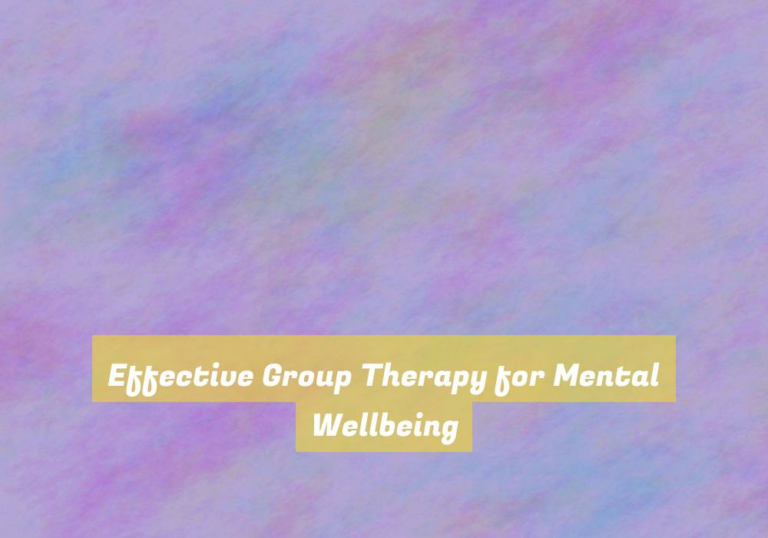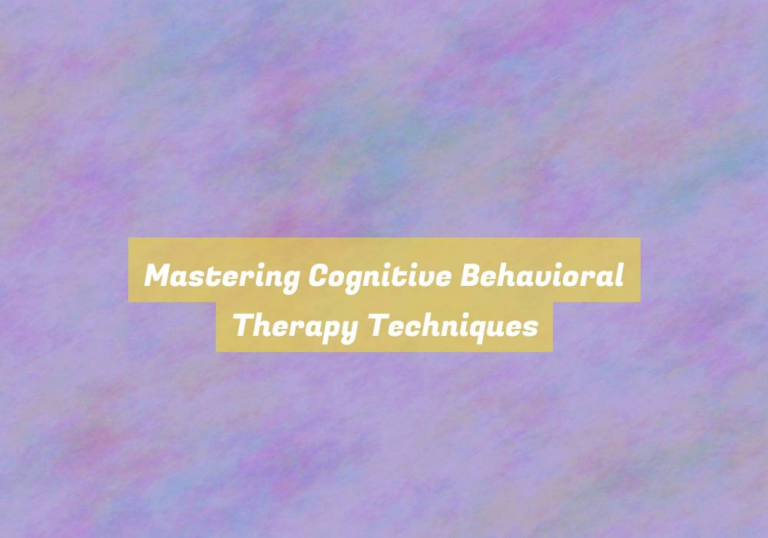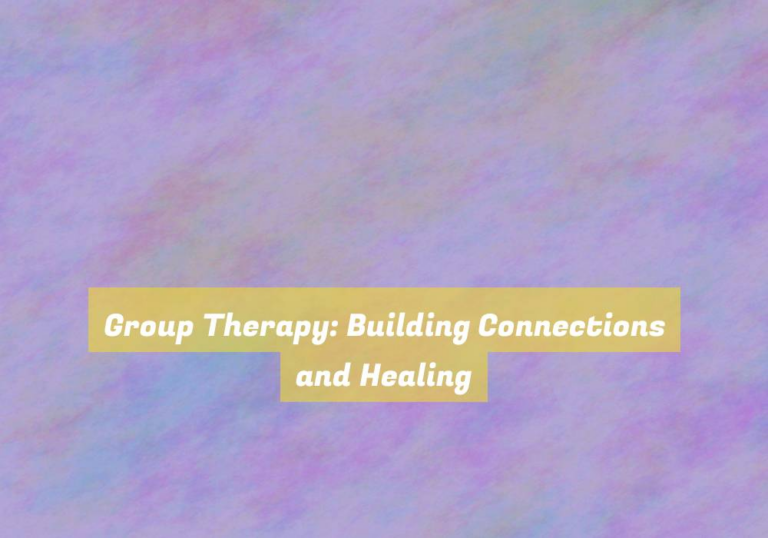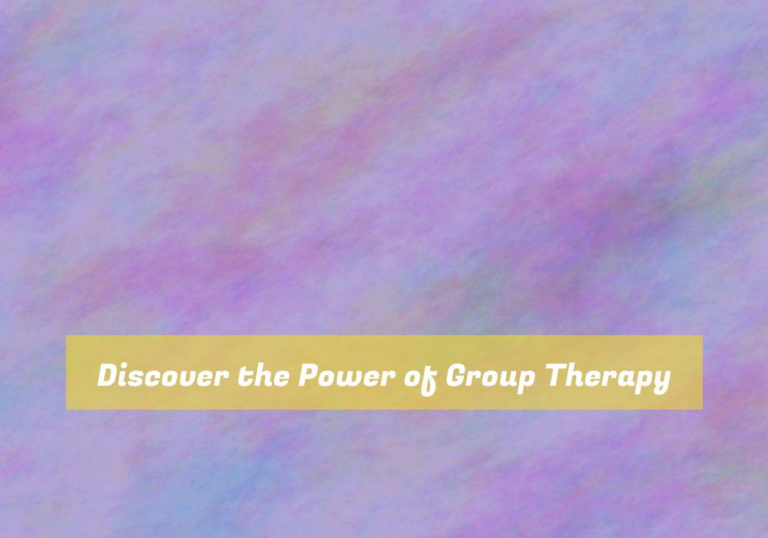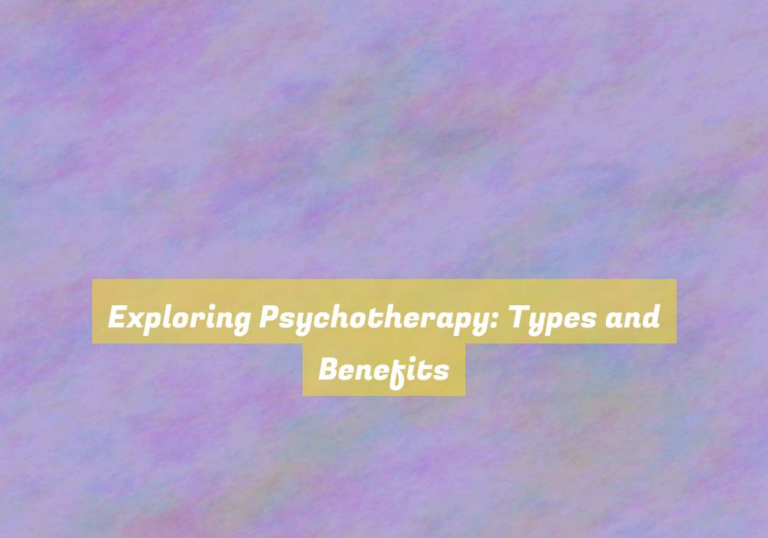Unlocking Change with Cognitive Behavioral Therapy
If youG??ve ever felt stuck in a cycle of negative thoughts and behaviors, youG??re not alone. Cognitive Behavioral Therapy (CBT) offers a powerful framework for unlocking change in your life.
By recognizing and challenging the patterns of thinking and behaving that hold you back, CBT can help you cultivate a more fulfilling and meaningful life.
But how exactly does it work, and what makes it so effective? LetG??s explore the principles and methods of CBT to understand how it can create lasting transformation in your life.
Understanding Cognitive Behavioral Therapy
If youG??re looking to understand cognitive behavioral therapy, it helps to know that it focuses on changing negative thought patterns and behaviors to improve mental health. Through this therapy, youG??ll learn how your thoughts, feelings, and behaviors are interconnected and how they can influence each other. ItG??s about identifying harmful thought patterns and learning how to replace them with more constructive and positive ones.
In cognitive behavioral therapy, youG??ll work with a therapist to recognize and challenge the negative beliefs and attitudes that contribute to your struggles. This process involves examining the evidence for and against your negative thoughts, helping you to develop a more balanced and realistic perspective. By doing so, you can gradually shift your mindset and responses to various situations, ultimately leading to improved emotional well-being.
Furthermore, this therapy approach also emphasizes the importance of changing behaviors that may be reinforcing negative thought patterns. Through targeted interventions and exercises, youG??ll actively work to replace unhelpful behaviors with healthier alternatives, fostering lasting changes in how you cope with challenges and stressors.
Identifying Negative Thought Patterns
To identify negative thought patterns, youG??ll need to pay attention to recurring thoughts that lead to feelings of distress or hinder your ability to cope with challenges effectively. These negative thought patterns can often be automatic and ingrained, making them challenging to recognize at first.
Start by observing your thoughts when you face difficult situations or experience strong emotions. Notice if certain thoughts consistently arise, such as G??IG??m not good enough,G?? G??Nothing ever goes right for me,G?? or G??I always mess things up.G?? These patterns of thinking can contribute to feelings of hopelessness, anxiety, or low self-worth.
Additionally, pay attention to cognitive distortions, such as catastrophizing, black-and-white thinking, or personalization, which can further perpetuate negative thought patterns. Journaling your thoughts can be a helpful tool in identifying and challenging these patterns.
Challenging and Changing Behaviors
You can begin challenging and changing behaviors by identifying specific actions or habits that contribute to your distress or hinder your ability to achieve your goals effectively. Once you have pinpointed these behaviors, the next step is to actively challenge them. This involves recognizing the triggers or situations that lead to these behaviors and consciously making an effort to respond differently.
For example, if procrastination is a behavior that hinders your productivity, you can challenge it by setting specific deadlines for tasks and breaking them down into smaller, manageable steps.
Changing behaviors also involves replacing negative habits with positive ones. This can be achieved by setting clear and achievable goals, establishing a routine, and seeking support from friends, family, or a therapist. Additionally, practicing self-care and mindfulness can help in replacing destructive behaviors with healthier alternatives.
ItG??s important to approach this process with patience and self-compassion, as change takes time and effort. By actively challenging and changing behaviors, you can pave the way for lasting positive transformation in your life.
Cultivating a Fulfilling Life
After actively challenging and changing behaviors that hinder your progress, the next step is cultivating a fulfilling life by focusing on your values and engaging in meaningful activities.
Take the time to identify what truly matters to you. WhatG??re the principles and beliefs that guide your life? Once you have a clear understanding of your values, you can start aligning your actions with them. This may involve setting specific goals that reflect these values, whether theyG??re related to personal growth, relationships, career, or leisure.
Engaging in meaningful activities is another crucial aspect of cultivating a fulfilling life. These activities should bring you joy, a sense of accomplishment, and a feeling of purpose. They can be anything from pursuing a hobby or passion, volunteering for a cause you believe in, or spending quality time with loved ones. By incorporating these activities into your daily life, you can create a sense of fulfillment and satisfaction.
Remember that cultivating a fulfilling life is an ongoing process. It requires self-reflection, commitment, and the willingness to make adjustments as you grow and evolve. Embracing your values and engaging in meaningful activities can lead to a more rewarding and purposeful life.
Conclusion
You can unlock positive change in your life with cognitive behavioral therapy.
By understanding your negative thought patterns, challenging and changing your behaviors, and cultivating a fulfilling life, you can take control of your mental health and well-being.
With the help of a therapist, you can learn to overcome challenges, develop healthier coping mechanisms, and create a more positive and fulfilling life.
DonG??t be afraid to seek help and make positive changes in your life.

